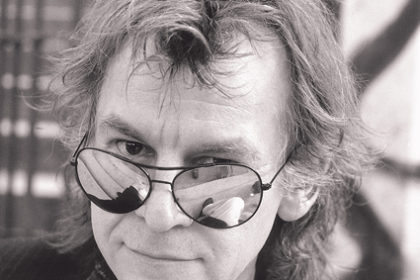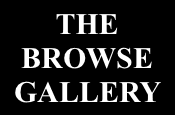Wolfgang Krolow: Photography and the sensuality of the moment

The photographer Wolfgang Krolow died in September 2019 in Berlin Kreuzberg. The Browse Gallery appreciates and loves his photographic art and has shown it in various exhibitions. Wolfgang was our neighbour and an active member of the community around Chamisso-Kiez. He is missing. We continue to encounter his gaze in his wonderful photographs, which open our eyes.
The cultural historian Rolf Hosfeld gave a funeral eulogy on the occasion of the funeral of his friend Wolfgang Krolow, in which man and artist are dignifiedly valued. In slightly shortened form the speech has now also been thankfully published by the taz of 23.11.19, worth reading.
Hosfeld has already aptly classified Wolfgang Krolow’s work in this way in the past: “His photographs are works of art that, like all good art, play with synaesthesia, make hidden structures visible, tell stories, reveal psychologies. This applies to his portraits of children and old people, punks and (later) prominent artists* such as Heiner Müller, Gisèle Freund and Chet Baker as well as to his poetic wall paintings and contrasting street landscapes.
He created some of the most beautiful and pointed portraits of the urban (co)life of the people in Kreuzberg and the rebellious culture of West Berlin in the late 70s and 80s. Photo journeys also led him to less frequently photographed, remote countries and places. The main point of reference for his work, however, always remained his adopted home Kreuzberg. His photographic work and books were highly esteemed by colleagues – including prominent ones – such as Jim Rakte, Max Scheler (Magnum), and above all F.C. Grundlach.
In 2010 the BROWSE GALLERY showed a large retrospective with 140 photographs by Wolfgang Krolow. More than 3000 visitors* were able to discover what Hosfeld once described about his friend’s special gift: “It is as if Wolfgang Krolow, equipped with a night vision device, can immediately discover dimensions behind the facades even in broad daylight that the naked eye cannot perceive”.
Today we are challenged to track down the invisible, the disappeared, without night vision. With our naked eyes we cannot see the person, friend and neighbour Wolfgang Krolow after his death on September 24, 2019 – on Saturday’s market at Chamissoplatz, in the bookstore on Bergmannstr. or in front of Marheineke Markthalle while drinking coffee he is never to be found again. This is sad and leaves a pale feeling of emptiness.
But we can find Wolfgang Krolow in his photographic work. In him we encounter his special view of the world and especially of Berlin and Kreuzberg in the late 70s to 90s. He lets us see in a new way and understand more. We ourselves and Berlin.
Pictures in which he reveals what we missed back then, what we didn’t see, what we couldn’t grasp, only felt raw when we walked through the streets. In Krolow’s photographs we encounter our youth and his: wild energy, dreamlike encounters, joie de vivre, melancholy, excesses and experiments. Historically and culturally, our departure interlocks symbiotically – happiness for us and for the city – with West Berlin’s urban-spatial peculiarities in the post-war period. These involuntarily provided a wide open field for the release of energy and creativity for the creation of new forms of life – free spaces in sloping, historically gaping urban wastelands.
“In an intoxicating productivity he portrays the district in a state of limbo between demolition and careful urban development. Whether Turkish women from the first generation of immigrants, children, German pensioners, Arab youths, punks – Krolow comes into contact with everyone and gains access to mosques, Koran schools, squatter flats. The tension between the various atmospheres becomes essential for his work.” ( Edith Siepmann, Schwarzweiße Seiltänze, taz Berlin 29.7.2007)
In his work there are pictures, moments and views that we didn’t see ourselves in everyday life at the time, whose beauty and significance we didn’t recognize and which we appreciate so much in his pictures today – the grace of the natural togetherness of ball-playing girls, blond one, with headscarf the other, the urban sensuality of the Mediterranean interplay of light and shadow of parking cars on Heimstraße at noon, the rousing energy of oblique lines of movement of fleeing boys in front of the vertical struts of the pointed metal grid in the dark rectangle of a courtyard gate, directly at the Berlin Wall.
Living images that can inspire individual biographical memory as well as fill the gaps of growing amnesia in the city’s collective cultural memory. This is why Wolfgang Krolow’s photographic legacy, as he wanted it to be, will in future definitely belong in a Berlin museum. And also for this reason the BROWSE GALLERY has, over the years in which it has dedicated itself to the excavation of the Kreuzberg and West Berlin art and cultural history of the post-war period, repeatedly integrated photographs by Wolfgang Krolow into various projects and shown his pictures in individual and group exhibitions.
But despite his loyalty to his city, the oeuvre of his photographic work goes beyond Berlin and Kreuzberg, and Krowlow is far more than a neighbourhood photographer. His black-and-white photographs have a quality that is independent of time and place. Joseph Roth wrote the sentence: “I draw the face of time”. Wolfgang Krolow does this with his camera, says Jörg Hafkemeyer at the opening of the Retrospective 2010. Even though Krolow’s photographs have documentary value for the city today, their strength lies far more in their power to stimulate poetic imagination and empathy with the vulnerability of the moment of our existence.
For an eye man like him, who could always see more and hidden things than many others, the world always had something almost out of joint. Nothing is, as it seems, and little is beautiful, but very human. He never met this sensitive insight with despair, but always with gentle, sometimes ironic or sarcastic melancholy, with a high degree of composure and wit, and to the end with a tremendous affirmation of life and bravery.” (Rolf Hosfeld)
More background information and pictures of Wolfgang Krolow on the website of Wolfgang Krolow. (German)

 Deutsch
Deutsch  English
English